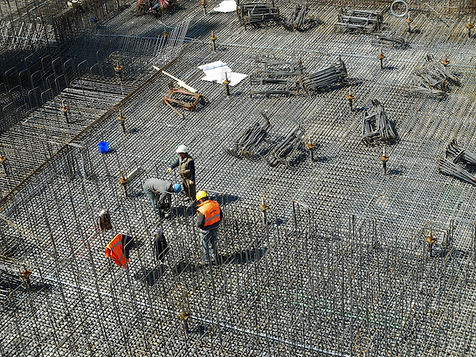The Need for Early Guidance
One of the most effective ways to address the labor shortage in the construction industry is by introducing young students to construction careers at an early age. Unfortunately, many students are unaware of the diverse and rewarding opportunities that await them in construction. Schools, parents, and industry professionals must collaborate to bridge this awareness gap.

Career Paths in Construction
The first step is to educate students about the various career paths within the construction industry. While construction might conjure images of hard hats and tool belts, it's a multifaceted sector with roles ranging from architects and engineers to project managers and skilled tradespeople. By presenting these options early on, we can help students discover their interests and passions.
Architects and Engineers
Architects and engineers are the visionaries behind construction projects. They design and plan structures, ensuring they are safe, functional, and aesthetically pleasing. For students with a passion for design and problem-solving, these roles offer exciting opportunities.
Skilled Tradespeople
Skilled trades are the backbone of construction. Carpenters, electricians, plumbers, and masons bring designs to life. These hands-on roles are perfect for students who enjoy working with tools and take pride in creating tangible results.
Project Managers
Project managers are like conductors of a construction orchestra. They oversee every aspect of a project, from budgets to timelines, ensuring everything runs smoothly. This role requires strong organizational and leadership skills, making it suitable for students with a knack for management.
STEM Education and Construction
Math and Physics
Math and physics are essential for structural engineering. Students who excel in these subjects can contribute to the safety and stability of buildings.

Technology
Hands-On Learning
While classroom education is essential, hands-on learning experiences can be transformative. Consider the value of organizing construction site visits for students. These visits provide an opportunity to see construction in action, ask questions, and gain insights into the practical side of the industry. Local construction companies can often be approached to arrange such visits.

Incorporating Construction into Curricula
Schools can take it a step further by incorporating construction-related projects into their curricula. For example, students might engage in designing and building scale models, allowing them to apply STEM principles in a real-world context. These projects not only teach valuable skills but also foster creativity and problem-solving abilities.
Promoting Mentorship and Apprenticeships
Mentorship programs and youth apprenticeships are invaluable tools for nurturing young talent in construction. Experienced professionals can guide and inspire students while providing hands-on training. These programs bridge the gap between classroom learning and practical experience, helping students make informed career choices.
Breaking Stereotypes
To attract a more diverse workforce, it's essential to break gender stereotypes associated with the construction industry. Girls and young women should be encouraged to explore construction careers with the same enthusiasm as their male peers. Highlighting the achievements of successful women in construction can serve as powerful motivation.

Final Thoughts
The future of the construction industry relies on the enthusiasm and dedication of the next generation. By fostering early interest, providing educational opportunities, and breaking down barriers, we can ensure a steady influx of talented individuals who will shape the future of construction.
As students embark on their educational journeys this fall, let's work together to build a brighter future for the construction industry and the world it constructs.






